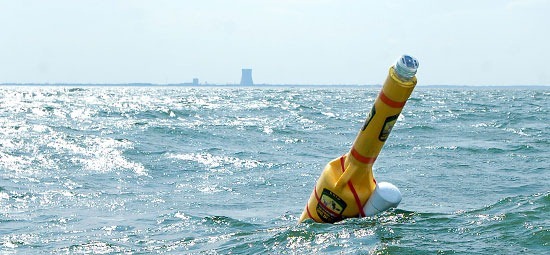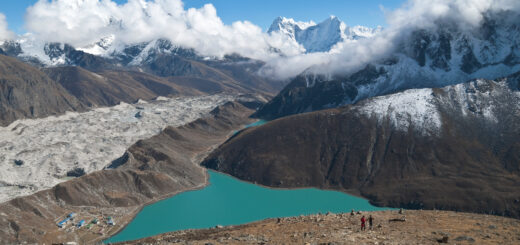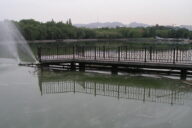Lake Erie: the walleye capital
0Lake Erie is the shallowest and smallest (by volume) of the Great Lakes. Its average depth is 62 feet, with a maximum depth of 210 feet. The lake is also home to one of the world’s largest freshwater commercial fisheries and deemed the “walleye capital of the world.”

This water quality monitoring buoy will help biologists study changes in walleye populations in Lake Erie. The lake is known by many as the “walleye capital of the world.”
Indeed it was the significance of the lake’s walleye that brought us to Lake Erie earlier this summer. We visited the Ohio Department of Natural Resources’ Sandusky Fish Research Unit to help install a water quality monitoring buoy that will allow biologists to study factors that influence changes in walleye population. Declining walleye hatch sizes are among the concerns researchers have for Lake Erie, which had for decades been on the mend from its worst conditions in the 1960s and 70s.
Lake Erie is perhaps most notoriously remembered as having been a “dead lake” during that era. The lake’s drainage basin covers 30,140 square miles, and much of this land is used for agriculture. Excess phosphorus runoff from fertilizer used on farmland and other sources inundated the lake, leading to eutrophication. This nutrient loading resulted in algal blooms, which consumed dissolved oxygen and made the water inhospitable to other aquatic life.
The lake was very much connected to the environmental reform of the ‘70s. In fact, the Cuyahoga River, which horrifically caught on fire and inspired the formation of the Clean Water Act, is a tributary of the lake. The river had become so saturated with industrial pollutants, it was flammable. The story of this river having burst into flames incensed conservationists and legislators, and it inspired significant environmental reform.
The Clean Water Act put major widespread pollution controls into place that significantly benefited Lake Erie. Additionally, the 1972 Great Lakes Water Quality Agreement between the U.S. and Canada also aided in controlling pollution entering the lake. Input levels from both point and non-point source pollution of phosphorus and other harmful chemicals started to fall, and water quality improved.
Erie is no longer a “dead lake,” but a dead zone — a hypoxic area devoid of dissolved oxygen — persistently appears in its central basin during late summer. The algal blooms have also been returning in recent years, and they are worsening the dead zone. In fact, 2010 could have some of the largest blue-green algal blooms, thanks to higher-than-usual water temperatures, increased phosphorus runoff, and a rising number of sewage overflows into the lake’s water.













